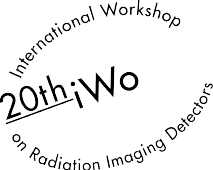Speaker
Description
The VZLUSAT-1 satellite, the first Czech CubeSat, was successfully launched on June 23, 2017, to a 510 km Sun-synchronous low-Earth orbit. It carries several scientific payloads [1] including a Timepix detector as focal plane imager for the X-Ray telescope onboard. The Timepix payload, already presented in [2], contributes significantly to the satellite data collection, with more than 20 000 frame acquisitions in the first year of deployment. Despite limitations of the satellite attitude control system, necessary for capturing X-Ray images of the Sun, the Timepix detector allows measuring the space radiation environment along the satellite low-Earth orbit. As of April 2018, we conducted 28 whole-Earth mappings, recording radiation doses around the planet with radiation maps comparable to those from the SATRAM - Timepix payload [3]. Further, we show data from scans of the South Atlantic Anomaly and polar radiation horns, where the location and acquisition time were tailored to minimize event pile-up and particle track overlap. Since October 2017, the optics segment of the onboard X-Ray telescope was deployed, which exposed the Timepix unshielded to free open space. This produced entirely new observations namely of low energy (< 10 keV) X-Ray and charged particles as well as a significant increase of measured particle flux. We also registered effects of exposing the sensor to direct intense Sunlight. We will summarize on the actual performance of the custom readout interface, which exceeds expectations in the constrained environment of the low-cost and low-powered CubeSat nanosatellite.
Image: "Radiation map (dose rate) along the orbit of VZLUSAT-1 registered by the Timepix on board. Data collected from 3 months."
[1] M. Urban, O. Nentvich, V. Stehlikova, T. Baca, V. Daniel and R. Hudec, "VZLUSAT-1: Nanosatellite with miniature lobster eye X-ray telescope and qualification of the radiation shielding composite for space application", Acta Astronautica vol. 140, 96-104, 2017.
[2] T. Baca, M. Platkevic, J. Jakubek, A. Inneman, V. Stehlikova, M. Urban, O. Nentvich, M. Blazek, R. McEntaffer and V. Daniel, "Miniaturized X-ray telescope for VZLUSAT-1 nanosatellite with Timepix detector", Journal of Instrumentation 11(10):C10007, 2016.
[3] C. Granja, S. Polansky, Z. Vykydal, S. Pospisil, A. Owens, Z. Kozacek, K. Mellab, and M. Simcak, "The SATRAM Timepix spacecraft payload in open space on board the Proba-V satellite for wide range radiation monitoring in LEO orbit", Planetary and Space Science, 125, pp. 114-129, 2016.




